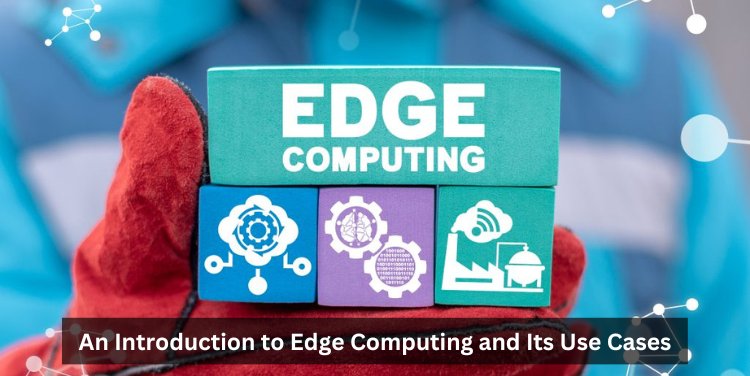An Introduction to Edge Computing and Its Use Cases

In the rapidly evolving landscape of technology, the concept of edge computing is gaining significant traction. As our digital world becomes increasingly interconnected and data-driven, traditional cloud computing architectures are facing limitations in terms of latency, bandwidth, and scalability. Edge computing emerges as a solution to these challenges by bringing computation and data storage closer to the source of data generation, enabling real-time processing and analysis. In this blog post, we'll delve into what edge computing is, its underlying principles, and explore various use cases across industries.
Understanding Edge Computing:
Edge computing refers to the paradigm where computation and data storage are performed near the data source, rather than relying solely on centralized cloud servers. This distributed approach allows for faster processing and reduced latency, making it ideal for applications that require real-time or near-real-time responsiveness.
At the core of edge computing are edge devices, which can range from IoT sensors and smartphones to edge servers deployed in close proximity to users or devices. These devices collect and process data locally, sending only relevant information to the central cloud infrastructure for further analysis or storage.
Key Principles of Edge Computing:
-
Low Latency: By processing data closer to the source, edge computing minimizes the time it takes for data to travel, reducing latency and enabling faster response times for critical applications.
-
Bandwidth Optimization: Edge computing reduces the volume of data that needs to be transmitted to the cloud, optimizing bandwidth usage and alleviating network congestion.
-
Scalability: Edge computing architectures are inherently scalable, allowing organizations to easily deploy additional edge nodes as needed to accommodate growing data volumes and user demands.
-
Reliability: Distributed edge nodes improve system reliability by reducing single points of failure and ensuring continued operation even in the event of network disruptions.
Use Cases of Edge Computing:
-
IoT and Smart Cities: Edge computing plays a crucial role in IoT deployments, enabling real-time monitoring and control of connected devices in smart cities. Applications include traffic management, environmental monitoring, and public safety.
-
Autonomous Vehicles: Edge computing enables autonomous vehicles to process sensor data locally for real-time decision-making, enhancing safety and responsiveness on the road.
-
Healthcare: In healthcare, edge computing facilitates remote patient monitoring, predictive maintenance of medical equipment, and real-time analysis of patient data for personalized treatment recommendations.
-
Retail: Edge computing enhances the retail experience by enabling personalized promotions, inventory management, and real-time analytics for customer behavior analysis.
-
Manufacturing: Edge computing improves operational efficiency in manufacturing environments by enabling predictive maintenance, quality control, and real-time monitoring of production processes.
-
Content Delivery Networks (CDNs): CDNs leverage edge computing to cache and deliver content closer to end-users, reducing latency and improving the overall user experience for streaming media and web applications.
Edge computing represents a paradigm shift in how we approach data processing and analysis, offering significant advantages in terms of latency, scalability, and reliability. By pushing computation closer to the source of data generation, organizations can unlock new possibilities for real-time applications across various industries, ranging from IoT and healthcare to retail and manufacturing. As the adoption of edge computing continues to grow, it promises to drive innovation and reshape the future of digital experiences.
What's Your Reaction?















